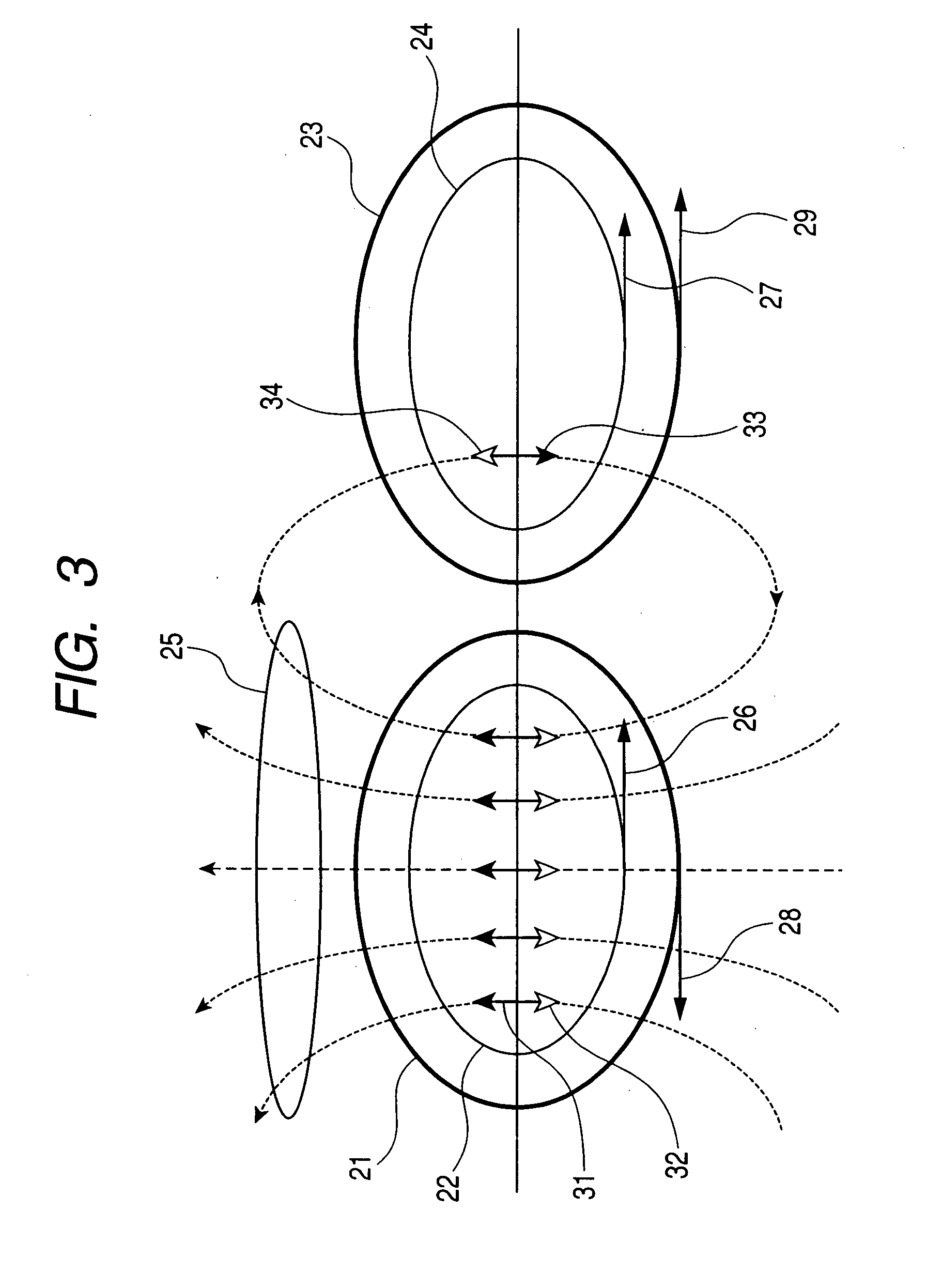Semiconductor devices with inductors
a technology of inductors and semiconductor devices, which is applied in the direction of automatic frequency control, automatic frequency control details, and semiconductor/solid-state device details, etc., can solve the problems of inability to use a semiconductor device produced by a common method, output of unwanted noise, and circuit malfunction
- Summary
- Abstract
- Description
- Claims
- Application Information
AI Technical Summary
Benefits of technology
Problems solved by technology
Method used
Image
Examples
first embodiment
[0053]FIG. 10 shows the first embodiment of the invention. In this embodiment, inductors provided with wires for reducing the inductive coupling in the modulator circuit 97 are exemplified. In the drawing, reference numerals 61 and 62 respectively indicate inductors, reference numerals 63 indicates a wire for reducing the inductive coupling forming a closed loop wire, reference numeral 64 indicates a modulator, reference numerals 66a through 66d respectively indicate buffers, reference numerals 67a and 67b respectively indicate base band signal inputs, reference numerals 68a and 68b respectively indicate carrier wave inputs, reference numeral 69a and 69b indicate RF signal outputs and reference numeral 70 indicates a capacitor. Base band signals orthogonal to each other are input to the base band signal inputs 67a and 67b. The respective orthogonal base band signals are of bipolar differential signals whose polarity is inversed to each other. Carrier waves (local oscillation signals...
second embodiment
[0057]FIG. 11 shows the second embodiment of the invention. In this embodiment, inductors provided with a wire for reducing the inductive coupling in the local oscillator 98 are exemplified. In the drawing, reference numerals 71, 72, 73, 74, 75, 76, 77, 78, 79, 80 and 81 respectively indicate an inductor acting as a choke coil, a wire for reducing the inductive coupling forming a closed loop wire, a resonance inductor of an oscillator, a varactor diode of variable capacity, a capacitor, a transistor, a variable current source to define the operational current of the transistor, a power source voltage to the transistor 76, a frequency controller, an oscillator output and a ground. In this embodiment, the inductor (i.e. choke coil) 71 takes the interfered side.
[0058] An oscillation frequency is defined by the frequency of a resonance circuit including the indicators 73, varactor diodes 74 and capacitors 75. When control voltage is provided to the frequency controller 79, the bias vol...
third embodiment
[0061]FIG. 12 shows the third embodiment of the invention. In this embodiment, inductors provided with a wire for reducing the inductive coupling in the modulation circuit 97 and the local oscillator 98 are exemplified. The inductors of the modulator circuit 97 take the interference source side while those of the local oscillator 98 take the interfered side. In the drawing, numeral reference 91 indicates an RF variable gain amplifier, reference numerals 92a and 92b indicate base band filters, reference numerals 93a and 93b indicate base band amplifiers, reference numeral 94 indicates a frequency divider, reference numeral 95 indicates an RF output, reference numerals 96a and 96b indicate base band signals, reference numeral 97 indicates a modulator circuit and reference numeral 98 indicates a local oscillator respectively.
[0062] The modulator circuit 97 has the same arrangement as that of the first embodiment and the variable frequency oscillator 98 has the same arrangement as that...
PUM
 Login to View More
Login to View More Abstract
Description
Claims
Application Information
 Login to View More
Login to View More - R&D
- Intellectual Property
- Life Sciences
- Materials
- Tech Scout
- Unparalleled Data Quality
- Higher Quality Content
- 60% Fewer Hallucinations
Browse by: Latest US Patents, China's latest patents, Technical Efficacy Thesaurus, Application Domain, Technology Topic, Popular Technical Reports.
© 2025 PatSnap. All rights reserved.Legal|Privacy policy|Modern Slavery Act Transparency Statement|Sitemap|About US| Contact US: help@patsnap.com



